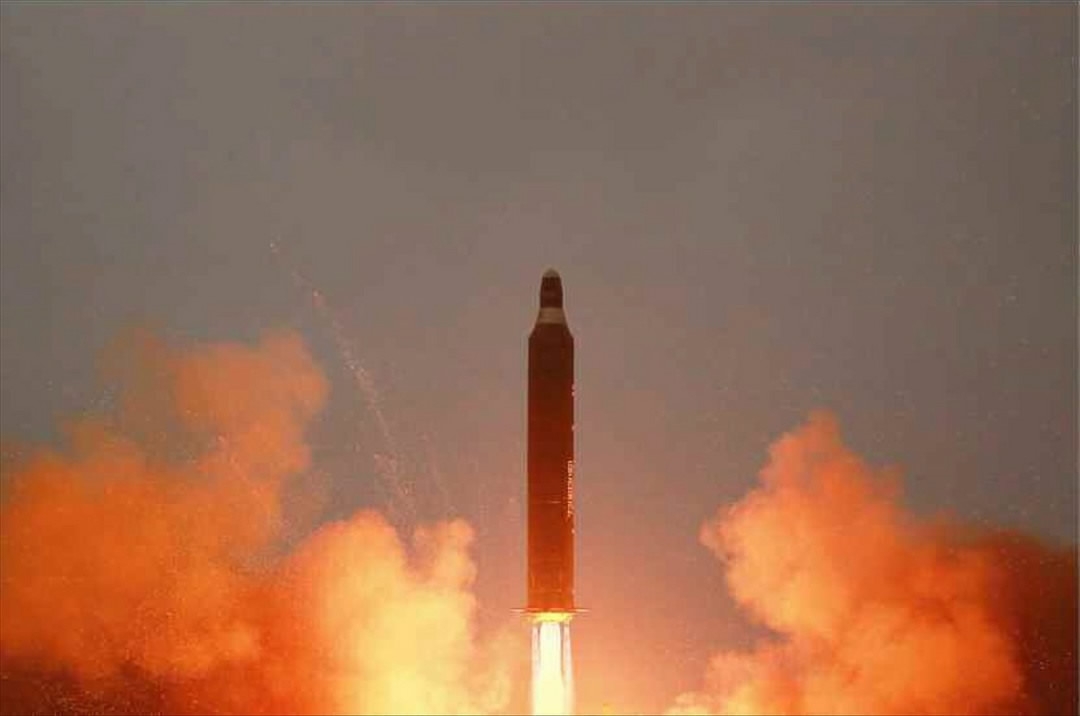The Democratic People’s Republic of Korea (DPRK) conducted a missile launch on Sunday morning, in what analysts said was a bid to attract attention from the new US administration under President Donald Trump.
The DPRK launched a “medium- or intermediate-range” ballistic missile at 7.55 a.m. towards the east coast of the Korean Peninsula from Banghyon air base in the western province of North Pyongan Province, according to South Korea’s joint chiefs of staff.
The launch, the first carried out by Pyongyang since Trump took office, occurred during Japanese Prime Minister Shinzo Abe’s visit to the US. Trump, together with Abe, gave a press conference in Florida in response to the DPRK’s missile launch.
“I just want everybody to understand and fully know that the United States of America stands behind Japan, its great ally, 100 percent,” Trump said. Noticeably, he did not condemn the launch this time, according to the Associated Press.
Abe meanwhile denounced the launch to be “absolutely intolerable.”
The Republic of Korea (ROK) said it violated UN Security Council resolutions, which ban the DPRK from using ballistic missile technology, and slammed what it described as a “serious confrontation against the peace and safety of South Korea and the international community.”

US President Donald Trump (R) and Japanese Prime Minister Shinzo Abe attend a joint press conference in Palm Beach, Florida, on February 11, 2017. /Xinhua Photo
According to Su Xiaohui, deputy director of the Department of International and Strategic Studies at the China Institute of International Studies in Beijing, the missile launch was meant as a message to the new US administration.
Following US President Donald Trump’s taking office, “the DPRK is trying to make the US attach more importance to the Korean Peninsula,” Su told CGTN.
Pyongyang “has been trying to send signals to and communicate with the US,” she said, but under the previous Obama administration, Washington “refused to invest energy and resources in dealing with DPRK nuclear issue and refused to speak with the regime.”
With Trump in power, the DPRK was now hoping to change things, Su argued, adding that “it is time for countries like the US to communicate with the DPRK to build mutual trust, and to finally release the tension on the Korean Peninsula.”
This included resuming six-party talks with the ROK, China, US, Japan, and Russia to resolve the DPRK’s nuclear issue, Su said.

The DPRK launches a ballistic missile at around 7:55 a.m. on February 12, 2017. /CFP Photo
On a visit to the ROK earlier this month, US Defense Secretary James Mattis warned of an “effective and overwhelming” response in case the DPRK employs nuclear weapons, and confirmed Washington’s commitment to Seoul’s security.
China meanwhile released a document effective on January 25 to ban the export of materials and goods that could be used for civilian and military purposes by the DPRK.
The move was part of China’s efforts to implement UN Resolution 2321 adopted last November in response to the DPRK’s fifth and largest nuclear test in September.









